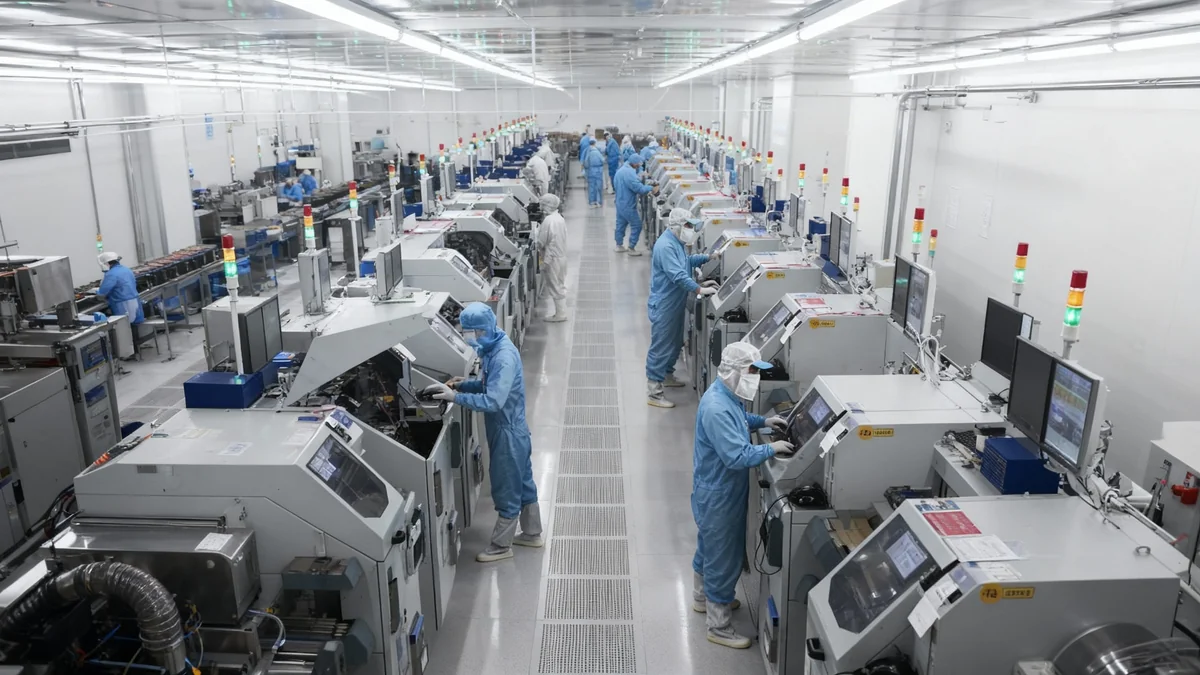A series of major investments by large technology companies into artificial intelligence firms is fueling a debate over market competition. While some view these partnerships as essential for innovation, global antitrust regulators are increasing their scrutiny, raising concerns that premature intervention could hinder technological progress and economic growth.
Key Takeaways
- Major technology firms are investing billions into AI companies to cover the high costs of computing power and data centers.
- Analysts describe the AI market as highly competitive, with intense rivalry across hardware, foundation models, and applications.
- Antitrust agencies in the United States and Europe are investigating these AI partnerships, citing concerns about potential market dominance.
- Some experts warn that a preemptive regulatory approach, which acts before competitive harm is proven, could stifle innovation.
- A recent analysis estimates AI could contribute $15.7 trillion to the global economy by 2030, but regulatory actions could impact this growth.
Massive Investments Drive AI Development
The development of advanced artificial intelligence requires significant capital. AI models are trained and operated using expensive silicon chips and energy-intensive data centers, creating a high barrier to entry for many companies.
This has led to a wave of strategic investments from established technology corporations. A recent example is Nvidia's announced $100 billion investment in OpenAI. Another major initiative is Project Stargate, a collaboration involving OpenAI, Oracle, and SoftBank, which plans to build five new AI infrastructure sites. This project represents a nearly $400 billion investment aimed at creating a total capacity of 7 gigawatts.
These alliances are not isolated. Many other AI firms have secured major third-party investments, indicating that capital is flowing to a variety of players rather than consolidating around a single dominant company. Proponents argue this investment is a sign of a healthy, competitive market essential for driving innovation forward.
Why AI Requires So Much Capital
Training large language models (LLMs) and other foundational AI systems is one of the most computationally expensive tasks in modern technology. It requires thousands of specialized processors, known as GPUs, running for weeks or months at a time in large data centers, consuming vast amounts of electricity. These investments cover the hardware, energy, and engineering talent needed to build and maintain these complex systems.
A Multi-Layered Competitive Field
The artificial intelligence sector is not a single market but a complex ecosystem with competition at multiple levels. According to Trevor Wagener, Chief Economist at the Computer & Communications Industry Association (CCIA), the industry is characterized by intense rivalry across its entire structure, often referred to as the "AI stack."
The Structure of AI Competition
Competition is evident in several key areas:
- Hardware and Infrastructure: Companies like Google, Amazon, Microsoft, and NVIDIA are in a race to develop specialized AI chips to improve the speed and efficiency of model training.
- Foundation Models: There is fierce competition among developers of large language models (LLMs). The performance gap between the leading models is shrinking, suggesting a crowded and dynamic frontier.
- Applications and Services: A diverse range of companies, from startups to established firms, are building specialized AI tools for consumers and businesses, creating a rich mix of business models.
- Cloud Access: Top AI startups like Anthropic and Cohere have partnered with different cloud providers, such as AWS and Google Cloud. This prevents any single cloud company from controlling access to the most promising AI firms.
Falling Costs and Rising Accessibility
Despite high initial investment costs, the price of using advanced AI is decreasing rapidly. According to one report, the cost of inference for models with performance comparable to GPT-3.5 fell by over 280 times between late 2022 and late 2024. This trend makes powerful AI more accessible to smaller companies and developers.
The Specter of Regulatory Intervention
Despite signs of a competitive market, antitrust enforcers in the United States, the European Union, and other nations have initiated investigations into AI partnerships. These regulators are concerned that investments from large tech platforms into smaller AI providers could stifle future competition.
Professor Jonathan Barnett of the University of Southern California notes that this reflects a shift toward a preemptive approach to antitrust enforcement in digital markets. This strategy favors early intervention based on the fear that these markets could "tip" toward a monopoly, where one or a few firms become dominant due to network effects and economies of scale.
This cautionary approach contrasts with the traditional, evidence-based antitrust philosophy, which typically requires proof that a specific practice is actually causing or is likely to cause harm to competition before action is taken.
Critics of the preemptive model argue that it risks punishing beneficial business arrangements. They warn that the threat of litigation could discourage the very investments that are fueling rapid innovation in AI, potentially slowing down economic and technological progress.
Finding a Path Forward
The debate highlights a fundamental tension between fostering innovation and preventing monopolies. The potential economic benefits of AI are substantial. An analysis cited by the CCIA estimates that AI-related products could add $15.7 trillion to the global economy by 2030, with $3.7 trillion of that in the U.S. alone.
However, realizing these gains may depend on the regulatory environment. In the United States, recent executive orders, including the "America's AI Action Plan" from July 2025, have emphasized removing regulatory barriers to promote American leadership in the field. An aggressive antitrust strategy could conflict with this stated goal.
Many experts advocate for a more measured approach. This would involve continuous monitoring of the AI ecosystem to identify practices that actively harm competition, such as creating unfair barriers to entry for new rivals. Instead of intervening based on theoretical concerns, regulators would act only when there is compelling evidence of competitive harm. This fact-based philosophy, combined with a reduction in unnecessary regulatory hurdles, is seen by some as the most effective formula for ensuring a dynamic and world-leading American AI sector.





